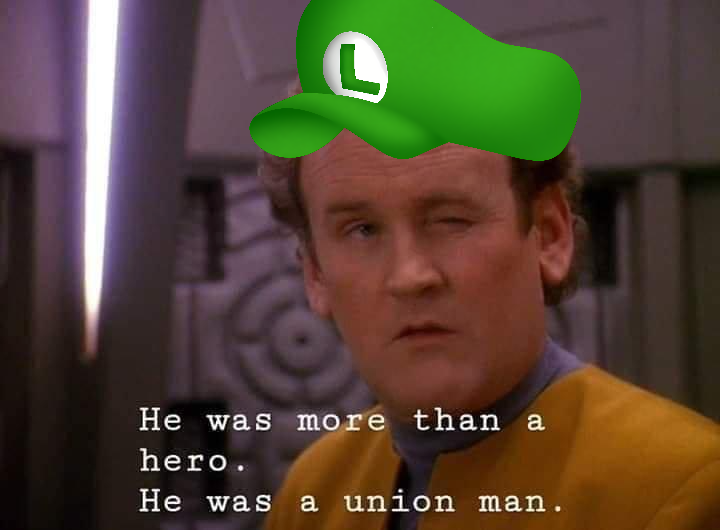Idk much about this company but I’m assuming $150,000 is nothing to them.
But I suppose it’s the precedent this sets, not the fine itself
Now they know it’s worth just 150k to litter all they want.
Not necessarily how they’re viewing it.
Once if was free, now it’s $150,000+ with the possibility of that increasing anytime
Don’t tell ole muskrat.
SpaceX satellites are in a different place so the rules and limits are different.
Dish Network’s satellite is in geostationary orbit. This is a narrow 2 dimensional circular ban of space approximately 20,000 miles away from the Earth. Earth sits in the middle of the circle. This is very valuable space because
how objects there have very little gravitational interference (rather gravity is canceled out by other source of gravity).…the satellite appears to stay in a specific spot in the sky without moving. The reason Dish Network was asked to move its old dead satellite was to make room for a new one to sit in the same place. Again, very limited space there. So when Dish Network didn’t move all the way out, it means its much harder (impossible) to use that space for someone else’s satellite. What’s worse is that it will take from 40 to 100 years for the Dish Network Satellite to fall out of orbit on its own. So unless a vehicle goes out and gets it to move it, that slot is unavailable for decades!SpaceX satellites, like thousands of others, are in LEO (low earth orbit). Instead of 20,000 miles away its about 200 miles from the surface of the Earth. Additionally, unlike geostationary, there’s no narrow band. its all the way around the Earth’s sphere. LEO is considered “self cleaning”. Any dead satellites in LEO will re-enter and burn up in 3 to 5 years. As in, do nothing and LEO satellites go away relatively soon.
EDIT: @Nighed@sffa.community correctly pointed out I mixed in a Lagrange point concept, which doesn’t apply here.
I think you are getting confused between geostationary orbit and legrange points.
Geostationary orbit is just the narrow band where you can have a stable orbit at the same speed as the earth’s rotation (so it stays in the same place in the sky) no other gravitational bodies involved.
you’re absolutely right. I’ve edited my post to remove the Lagrange point logic and correct the value of geostationary orbits. Thank you :)
Thank you and @Nighed@sffa.community. That was a great explanation.
The worry with the self cleaning band is the possibility of Kessler syndrome. See, the geosynchronous satellites are basically stationary relative to each other, and geosync is huge, so if one is junk, it’s stationary junk with nothing around it.
LEO orbits, in the other hand, criss-cross each other in a maddening dance. And if one shatters into dozens of tiny projectiles, that could shatter another and another into a cascade of space shrapnel. And then low Earth orbit is closed. No starlink, no iss, no manned spacecraft, etc.
It would self clean in a few decades. Three. Maybe five.
His fall downward and burn up in the atmosphere due to the low location. His actually leave no space junk in orbit.
Without any context, anyone who sends things to space can easily pay $150k. For context though, they are worth $3.35 billion as of September. $150k is probably less than a days electric bill for their offices.
sofa cushion money.
$150k fine to a company with ~ $17 billion in annual revenue is less than ninety cents for someone that earns $100k a year.
The $150,000 fine represents a tiny proportion of Dish’s overall revenue, which was $16.7bn in 2022.
It’d probably cost $10M-$20M to launch a falcon 9 up to that altitude alone, not to mention the tech and equipment to change its trajectory without also causing more space debris.
Fines exist only to hurt the poor.
For the rich/big businesses they are just a rounding error.
Dish/DirectTV/whatevertheyarecalledthesedays won’t be long for this world. Eventually any amount of fine will be worth more than they have which will be $0. But for now, yeah, let’s ad another 0 to this fine AT LEAST!
The $150,000 fine represents a tiny proportion of Dish’s overall revenue, which was $16.7bn in 2022.
It’d probably cost $10M-$20M to launch a falcon 9 up to that altitude alone, not to mention the tech and equipment to change its trajectory without also causing more space debris.
Should the fine not be the cost of a mission to move the satellite? It’s within our technology now.
That would make sense - the fine should be enough to pay for the satellite’s disposal.
Over and over we’ve seen companies not be held responsible for the cleanup of their projects. A lot of parallels to the fossil fuel industry, where they often abandon their wells with little recourse for the people left to clean up the pieces.
That would negatively impact future campaign contributions.
This is the real answer. This is both doing something and nothing at the same time. Pandering to both sides.
Article says the fine is for not moving the satellite far enough away from things still being used. Maybe all they have to do is send it a command to move itself further
The article says it ran out of fuel
Oh rip, I missed that
As someone who owns an appartment complex I want to fine them for roof junk.
The last apartment I was in had dozens of satellite dishes on the back of every building for a dozen apartments, they didn’t even bother to check if one was hooked up before screwing a new one into the wall
I found that dish will screw giant lag bolts right through the shingles of your roof, right next to 3 other abandoned dishes. They are no longer allowed in our complex. I finally identified all the abandoned ones (alost all of them now as they are phased out), removed them and patched all the shingles. Filled an entire dump trailer. It was ridiculous. Had to repair ceilings from the leaks. Cable company is almost as bad. They leave all the old wires up, run new ones right over top. Putting nails through all the siding. But at least they aren’t destroying the roof.
Alright everyone, let’s get him
You own an apartment complex?
He can’t respond because he’s too busy painting over all the light fixtures and power outlets
This is true actually. But I had to work late because I accidentally got some on the wall.
I tried to upload the gif of the outdoorsman smiling and nodding but it broke. Loved this reply lmao
As someone who is an actual living human: give your shit away.
As an also actual living human, I rent strictly to seniors, our rent is $4-500 cheaper than anything else comparable in town because they live on fixed income and I am a paramedic/firefighter that works 3 jobs to survive. I am not one of the scumbags (I don’t think?) I don’t make much of a profit because I refuse to raise the rent on a bunch of widowed old ladies living on fixed incomes and I put my resources back into the units to maintain or improve their living conditions. Yeah, it increases the property value. So I’m not going to pretend it’s pure charity, it is a business. But I am not gouging my tenants while I very much can during the housing shortage like every other landlord in my small town.
If I gave it away it would just be bought up by the same monopoly that owns every other complex in my town. He has offered me 3 times what I paid and I refused to sell. Not because I wouldn’t LOVE the money, but because the tenants that are pretty much family, that have watched my kids grow up, that have gone to my wedding, would all immediately be out on their ass.
Cool, now lets issue one to Dillweed over at X for Starlink. There was literally a petition put out by the astronomers at ground-based observatories begging him not to do it. What had already been put up was making issues for ground-based telescopes, the full constellation will likely make the multimillion-dollar optical telescopes overpriced tourist attractions.
https://www.astronomy.com/science/starlink-satellites-disrupt-cosmic-studies/
I’ll bite the bait and ask you to explain how Starlink satellites contribute towards the space junk problem without having to reference astronomy or bringing up you-know-who’s name.
the space junk problem without having to reference astronomy
But that’s like half the problem with it.
Obviously some people don’t care about science. But yeah, the inability to properly observe space from Earth would be crushing - while the new space telescopes are goddamned awesome, they’re also ridiculously expensive and tiny compared to the massive surface-built structures we have on Earth.
Starlink adds a tremendous number of satellites to Low Earth Orbit. Like, Starlink is now something like 50 percent of all active satellites. That’s a lot of traffic up there. And in LEO, where orbits criss-cross in an endless complex dance, the risk of collisions is far higher than in Geosync. While the advantage of LEO is that everything has a lifetime measured in decades until the orbits decay and they burn up, the risk is Kessler Syndrome, where shrapnel from collisions creates an endless cascade of destruction that makes LEO completely unusable for several decades. That would be the end of all LEO satellites and all manned spaceflight for possibly the rest of our lives. You could still get ships through the Kessler debris layer safely for launching high-orbit and geosync satellites, but low orbit would be too hazardous to place anything in for long-term work, especially since it would risk prolonging the problem.
If Kessler starts, it will be impossible to stop - the shrapnel is too small for satellites to detect and avoid with their adjustment thrusters. A pandemic-style S-curve of destruction as all the satellites in LEO die. And we’d have to evacuate ISS.
Starlink is losing a crazy number of satellites. Are they burning up or becoming junk?
Starlink sattelites operate in a low orbit that decays over time. They all fall back to earth eventually.
Specifically i think starlink satellites do not have any boosting thrusters, the reason important LEO satellites like the ISS don’t burn up unless intended is due to those
starlink satellites do not have any boosting thrusters
Starlink satellites actually do have Hall-effect ion thrusters, and can raise and lower their their own orbits. Though like any spacecraft, they still have a finite amount of fuel and will eventually deorbit.
I heard they’re designed to burn up in the atmosphere. Probably not an eco-friendly move, but it beats taking a satellite to the head.
Probably not an eco-friendly move
Fine powder of metals strewn over a few km², there’s more coming from outer space via micrometeorites and dust. And that bit CO² in the Stratosphere…
Yeah but you also have to manufacture and send up the satellites into LEO.
Also counterintuitively, you need some fuel to deorbit, which adds payload weight at launch and requires more fuel in the first place.
For example, getting a unit of rocket fuel to the Moon requires about ten times as much at launch.
I don’t think they need much fuel in this case unless they want to be absolutely sure that they deorbit in the right place. The satellites are so small that might not even be needed.
Yes, it takes little fuel to destabilize one’s orbit and eventually enter the atmosphere to burn up. It’s more difficult if you need to make sure that the craft doesn’t take others down during the procedure.
The satellites are in LEO so the orbit will decay on its own because of the atmospheric drag.
I don’t think they really have to worry about taking down other satellites.
Starlink’s only have fuel because of the initial lower orbit, as far as i know. Wasn’t that to test them, for radiation and so on?
A crime with a fine is a crime only for the poor, and definitely not for the guy who probably got a million dollar note commissioned just so he could wipe his ass with it
like, you’re not wrong…but also who is poor and getting a space junk fine???
“[This could] go on and potentially hit other satellites, causing yet more debris and potentially cause a cascade reaction.”
“Just like the…”
“Sigh, yes like the Sandra Bullock movie.”
what about other countries?
This is the best summary I could come up with:
The US government has issued its first ever fine to a company for leaving space junk orbiting the Earth.
The Federal Communications Commission fined Dish Network $150,000 (£125,000) for failing to move an old satellite far enough away from others in use.
Space junk is made up bits of tech that are in orbit around the Earth but are no longer in use, and risk collisions.
Officially called space debris, it includes things like old satellites and parts of spacecraft.
“The more things we have in orbit, the more risk there is of collisions, causing high-speed debris,” said Dr Megan Argo, senior lecturer in astrophysics at the University of Central Lancashire.
"Even a paint chip… coming in the wrong direction at orbital speed, which is 17,500 miles an hour [could] hit an astronaut doing a spacewalk.
The original article contains 402 words, the summary contains 136 words. Saved 66%. I’m a bot and I’m open source!
We’ve already polluted our home and now we’re polluting the sky above.
I’m not against science and I understand why space is interesting, but it’s as if my car was leaving its tires somewhere every time I’m using it.
@Dariusmiles2123 @dantheclamman
You are leaving tires everywhere. One recent study found tire dust pollution was the number one microplastic in the ocean. A different older study found it was number #2, which is still pretty bad. You almost certainly have tire dust floating around inside your body too. If they made tires purely out of rubber this wouldn’t be such a problem, but they don’t.(the double @'s are because I’m on mastodon, that’s just what it does.)
Yeah I know I’m a tiny bit of my tires, but I ain’t leaving a whole tire behind just because it’s difficult to bring home 😅
But what you said is interesting and it shows that we’re polluting the world in so many different ways.
Still we can’t be perfect but we can try to improve.
I wonder how much of the rise in reported latex allergies is the prevalence of tire bits in the environment. Iirc, some of the rise is from increased awareness and some is it attributed to increased latex glove usage in medical settings due to the AIDS epidemic. But are tires also a relevant factor?
(Am latex sensitive, have never used latex gloves even in an educational setting because my high school chem teacher was allergic so we had nitrile in the lab)
Is that a real pic? Like millions of satellites and junk just revolving around earth.
I’m pretty sure it’s just a computer generated Depiction, an actual picture likely wouldn’t have the objects visible or would only just barely be visible because they are so small compared to the earth. This one is exaggerated so you can see them.
Thanks man
No Problem
One of the biggest fears I tend to think of about in space is Kessler Syndrome where one collision creates a shotgun blast of debris that increases the chances for more collisions (cascade effect). If you’ve seen the movie Gravity you get a great example of how it would go down.
There are ~20,000 objects in orbit large enough to be tracked as hazards. Personally unclear if that includes active satellites, but that’s ‘only’ another ~10,000.
There are ~100,000 airline flights a day worldwide.
How crowded does the sky look with planes?
Yes space junk is a thing to be concerned about / regulate. But at the scales involved it’s basically negligible. We’re orders of magnitude away from any kind of cascade or locking ourselves out of orbit or any other doomsday scenario.
Planes can also move out of the way of other planes, and have air traffic controllers directing them. Space junk doesn’t do that, and while I agree that space junk isn’t “crowding” space at this point in time. It does appear to be ever growing and it is just a matter of time before an important satellite is taken down due to neglecting this ever growing space junk problem.
Satellites do. They also are required to have plans to be raised to a graveyard orbit or to be de-orbited. This one failed to reach it’s graveyard orbit is the issue. It can be an issue if it gets out of hand, but it really isn’t for a long time. Space is big. By the time it is an issue, we’ll probably trivially be able to handle the cleanup (or we’re in another dark age).
Space junk is highly deterministic, though. No atmosphere to fuck with.
Are all satellites coordinated in a mesh? If so, that’s pretty cool. I thought it was chaotic and they were basically saying like “chances of collision are 0.0001%, send that mofo and good luck”.
Satellites have some degree of mobility and space junk follows trajectories that can be computed basically infinitely into the future.
There’s little chaos. Something in orbit can be projected out for a long time with little error based on just a few observations, so even things not sending data back we can track fairly trivially. If something is in orbit it stays in mostly the same orbit unless it hits something else.
(There are very small changes based on gravity depending on how dense the area below it is, but that effect is fairly small and probably accounted for in simulations to some degree. Low orbits will also have some atmospheric effects too. They will all also have small changes based on solar radiation as well, but this is really minor.)
I believe it’s just a depiction of it. Looking around some other similar pictures, there were some images where it showed all “space debris” larger than 1cm as like a white dot. So, it’s not quite the level of fields of metal floating around out there.
deleted by creator
Meanwhile here’s Starlink with 25,000 near misses and accelerating, doubling every 6 months.
Starlink satellites are in a much lower orbit. They’re an issue, but fundamentally not the same.
As in, a starlink satellite that fails, also quickly falls out of orbit.
I don’t know nt get it. They only moved it half the distance that they needed, because it ran out of fuel. It’s a relatively short distance and I’d expect space movement to keep moving, after I initiated, as there is no friction. Why did it stop moving once they were headed away?
Explaining orbital mechanics is hard because people aren’t used to it, but I’ll try. I’d recommend playing Kerbal Space Program if you really want to understand it though.
Orbiting is just moving horizontally as fast as gravity pulls you down, so you never fall down. If you speed the horizontal part up, you’ll move further away on the opposite side of your orbit because you were moving sideways faster than you were falling down. To stay at that altitude you need to be moving faster though, so you’ll fall back in if you don’t accelerate here again. You don’t just keep going further away, because higher orbits require faster and faster speeds.
Let me know if that helps, but this probably can’t be understood by text very easily. You probably at least need pictures, if not video, but actually interacting with it is the best way. Kerbal Space Program is famous for helping people wrap their mind around orbital mechanics.
I’ll second KSP. I learned a ton from that game.
I got it one time when someone explained orbiting as “falling faster than gravity pulling you towards the ground”.
186 miles further from Earth, but at the end of its life in 2022 had moved it only 76 miles after it lost fuel.
My emphasis.
The satellite is orbiting Earth and to move further away from something you’re orbiting, you need to raise your orbit. This basically means you need to go faster in the direction of orbit in order to move further from what you’re orbiting.

























